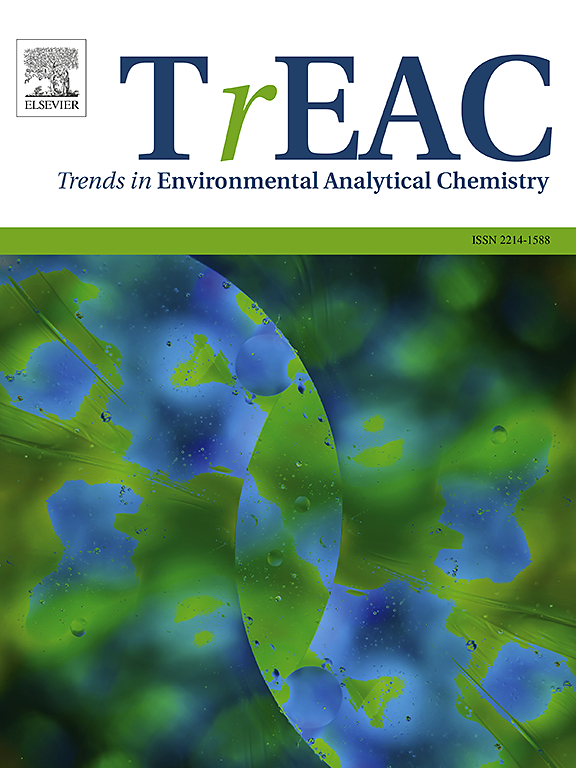环境中的药物和微(纳米)塑料:吸附和分析挑战
IF 11.1
2区 化学
Q1 CHEMISTRY, ANALYTICAL
引用次数: 0
摘要
药物残留和微(纳米)塑料同时出现在水生环境中,引起了人们对它们之间潜在的相互作用以及随之而来的归宿、迁移、生物利用率和毒性的关注。虽然已有大量研究对实验室条件下的这些相互作用进行了调查,但关于它们在现实世界中的行为,仍然存在着巨大的知识差距。本综述通过批判性地分析环境样本或模拟自然条件下药物对微(纳)塑料吸附的最新文献,弥补了这一空白。主要研究结果强调了这些相互作用的性质,它们受到微塑料类型、表面积和生物污垢等因素的影响。然而,实地研究的稀缺性和持续存在的分析难题(包括取样、提取和检测限制)阻碍了对真实场景中这些过程的全面了解。未来的工作应优先发展标准化方法、先进分析技术和扩大实地监测,以全面评估与药物-微塑料相互作用相关的环境和人类健康风险。这些知识对于制定有效的缓解战略和政策决定,解决水生生态系统中日益严重的药物和微塑料污染问题至关重要。本文章由计算机程序翻译,如有差异,请以英文原文为准。
Pharmaceuticals and micro(nano)plastics in the environment: Sorption and analytical challenges
The co-occurrence of pharmaceutical residues and micro(nano)plastics in aquatic environments raises concerns about their potential interactions and consequent fate, transport, bioavailability, and toxicity. While numerous studies have investigated these interactions under laboratory conditions, a significant knowledge gap remains regarding their behaviour in real-world scenarios. This review addresses this gap by critically analysing recent literature on pharmaceutical sorption to micro(nano)plastics in environmental samples or under simulated natural conditions. Key findings underscore the nature of these interactions, influenced by factors such as microplastics’ type, surface area, and biofouling. However, the scarcity of field studies and persistent analytical challenges (including sampling, extraction, and detection limitations), hinder a comprehensive understanding of these processes in real scenarios. Future efforts should prioritise the development of standardised methodologies, advanced analytical techniques, and expanded field-based monitoring to comprehensively assess the environmental and human health risks associated with pharmaceutical-microplastic interactions. This knowledge is crucial for informing effective mitigation strategies and policy decisions to address the growing concern of pharmaceutical and microplastic pollution in aquatic ecosystems.
求助全文
通过发布文献求助,成功后即可免费获取论文全文。
去求助
来源期刊

Trends in Environmental Analytical Chemistry
Chemistry-Analytical Chemistry
CiteScore
21.20
自引率
2.70%
发文量
34
审稿时长
44 days
期刊介绍:
Trends in Environmental Analytical Chemistry is an authoritative journal that focuses on the dynamic field of environmental analytical chemistry. It aims to deliver concise yet insightful overviews of the latest advancements in this field. By acquiring high-quality chemical data and effectively interpreting it, we can deepen our understanding of the environment. TrEAC is committed to keeping up with the fast-paced nature of environmental analytical chemistry by providing timely coverage of innovative analytical methods used in studying environmentally relevant substances and addressing related issues.
 求助内容:
求助内容: 应助结果提醒方式:
应助结果提醒方式:


